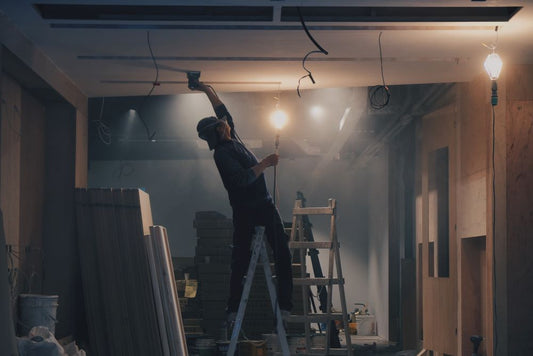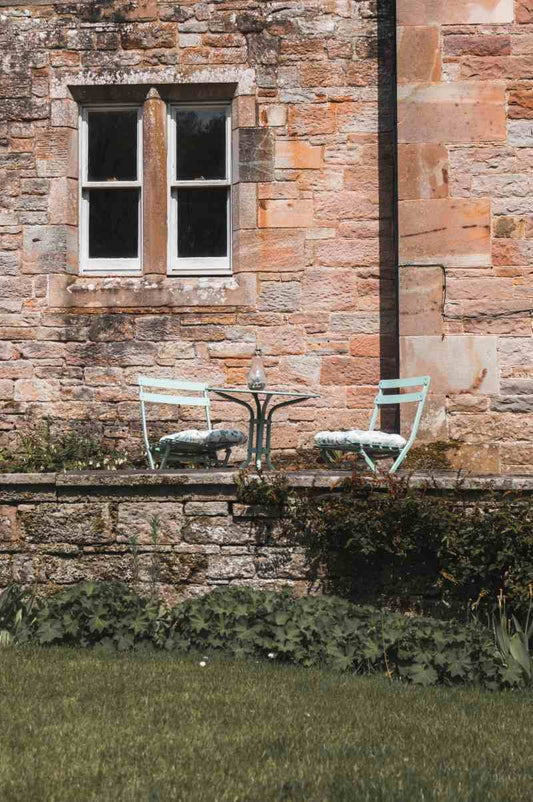Bricks Absorb Water!!
The rainy weather is not good when you are laying bricks. Not only can it water down your mortar, but the bricks can also absorb the moisture making them harder to work with.
When you are working in the rain, take extra care to cover your bricks and brickwork with waterproof tarps. Too much water and the strength of your wall or bricks deteriorates.
To find out more on how to enhance your brickwork durability in rainy weather, just continue to read our article. It provides important information to help you build stronger walls even when the weather is against you.
Understanding The Impact Of Rain On Brickwork
When you are beginning your bricklaying career, it is important to understand how rainy weather affects your work. While water is good to mix the mortar too much water can have disastrous effects on the quality of the wall, etc., you are building.
Letting too much rain reach your brickwork ends up with weakened joints and you can see fine lines washed into your work. In the end, the results are not that good.
The rainwater will reach unprotected brick areas and eventually start weakening the structure. Partially filled joints will allow wind-driven rain to enter and start to deteriorate the mortar as well as the joint.
When this takes place, your brickwork becomes inferior and you may have to do the work all over again. That is a situation you wish to avoid at all costs.
Choosing The Right Brick Type For Rainy Climates
This is a Goldilocks situation. The bricks cannot be too wet nor can they be too dry, they have to be just right if you are wanting to erect a strong brick wall that will not have its integrity compromised.
There are 4 categories for bricks when it comes to moisture absorption:
IW1- very little absorption
IW2- moderate absorption
IW3- normal absorption
IW4- heavy absorption
To select the right brick you have to determine how heavy the rain will fall while you are working. In most cases, you may want to go with the IW1 brick as that keeps the moisture absorption to the minimum.
If in doubt, it is best to talk to the brick manufacturer as well as the mortar manufacturer which will be your best type of brick and mortar to use in the different climates you are working under.
The biggest recommendation is never to lay bricks when it is raining. If you do then you are at risk of seeing efflorescence take place. Always cover your bricks and brickwork when you are not on the job site to protect them from any overnight rainstorms.
Application Methods And Considerations For Long-Lasting Protection
The current method of brick construction is to use what is called the cavity wall method. This method replaced the older solid wall method whose weakness was that when the wind-driven rain hit the wall, dampness was often the result on the interior of the home.
The cavity wall method alleviates this problem by allowing the water to reach the interior and flow down the inside only to be redirected to the outside via weep holes.
If the mortar holding the bricks is cement rich, then it is not as flexible and cannot meet the rigours of either too hot or too moist weather. The result is there will be cracks showing up in your brickwork eventually.
The type of mortar you should be using should meet durability requirements and the masonry unit being used.
Techniques For Removal And Prevention Of Brick Discolouration
The technical term for this discoloration is efflorescence and it begins to appear when the wet brick facade begins to dry out. As water evaporates through the brick face, it deposits water-soluble salts that are a normal ingredient in bricks and mortar.
When it does this, the appearance of your brick wall appears to be white and not the colour of the brick. To remove this white-coloured salt you have several options at your disposal.
You can try cleaning the brick with high-pressure water sprayed over the face. Another method to use would be one of the many products stone dealers sell to clean up bricks and stone.
Or you can use muriatic acid but you need to wet the brick first before applying this acid. If you don’t then you can add to your discoloration woes and make the bricks look worse or even have the acid eat the bricks.
A final method would be to sandblast the wall. This does not have to be heavily applied, a light sandblasting should rid the wall of stubborn discolouration.
Tips To Protect Your Brick Walls
- When you are building smaller garden walls, often the tops are left exposed to the elements. Over time, this exposure will cause damage to the wall. To prevent this just add some coping stones to the top of the wall to keep the weather away.
- Repair any cracks in your rendering or brickwork immediately. You may have to use sealant to close those cracks but if you leave them alone, you are allowing the rain to enter the cracks and do its damage. Instead of using sealant, you can just re-render the wall to make sure your work is fully protected.
- Use a wall coating that will protect the brick and the mortar. A good wall coating should stop up to 95% of rainwater from being absorbed into the bricks.
Some Additional Words
Protecting your walls from the rain is essential when you are bricklaying in the UK. To learn more tips and tricks to do this then contact our company through our website https://brickworktools.com/ .
Our experts will be glad to share with you some handy information to help you protect your brickwork for years to come. Plus we have some excellent bricklaying tools on sale that will make your bricklaying work a lot easier. Contact us today to see how we can help you.




